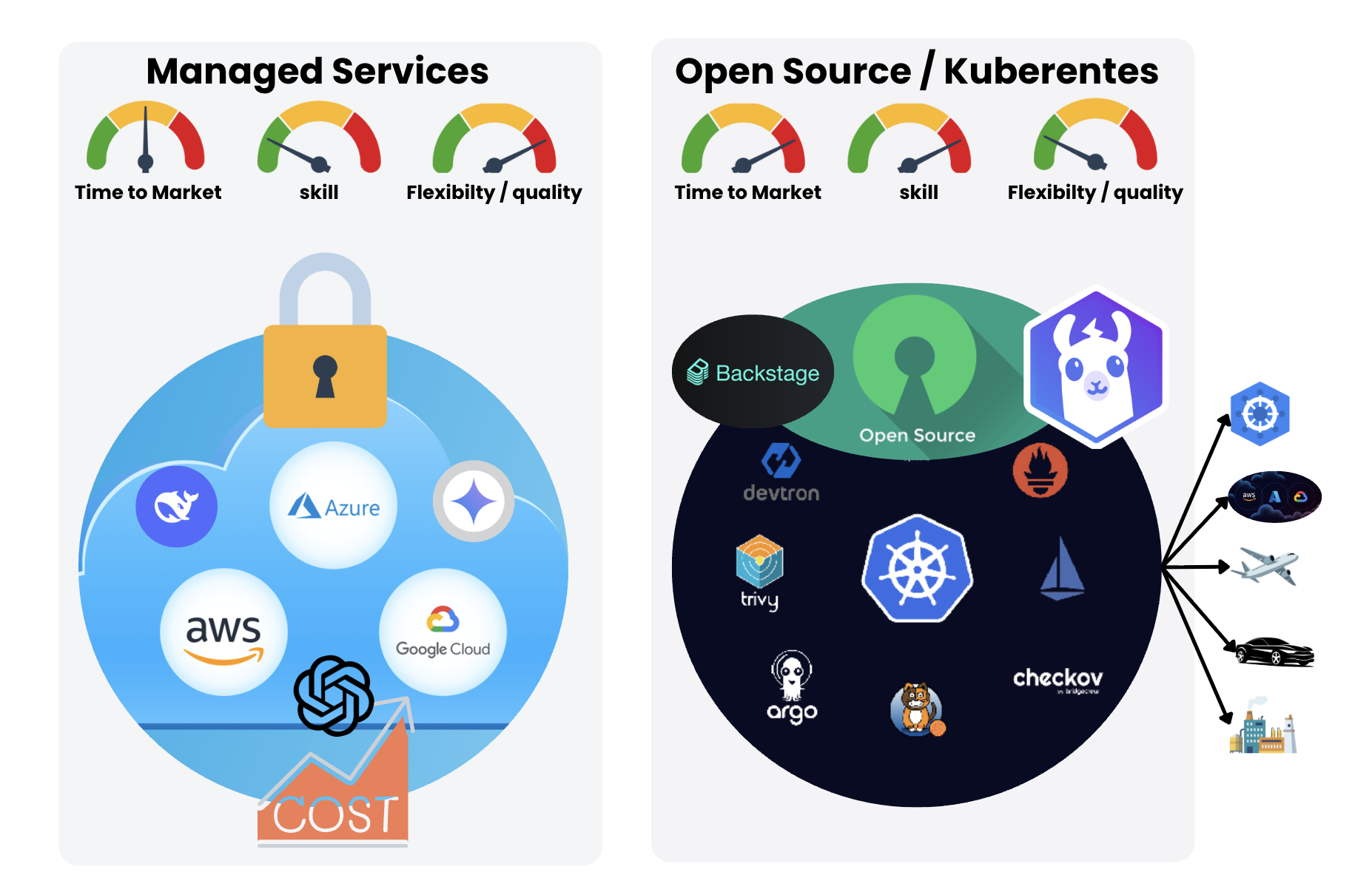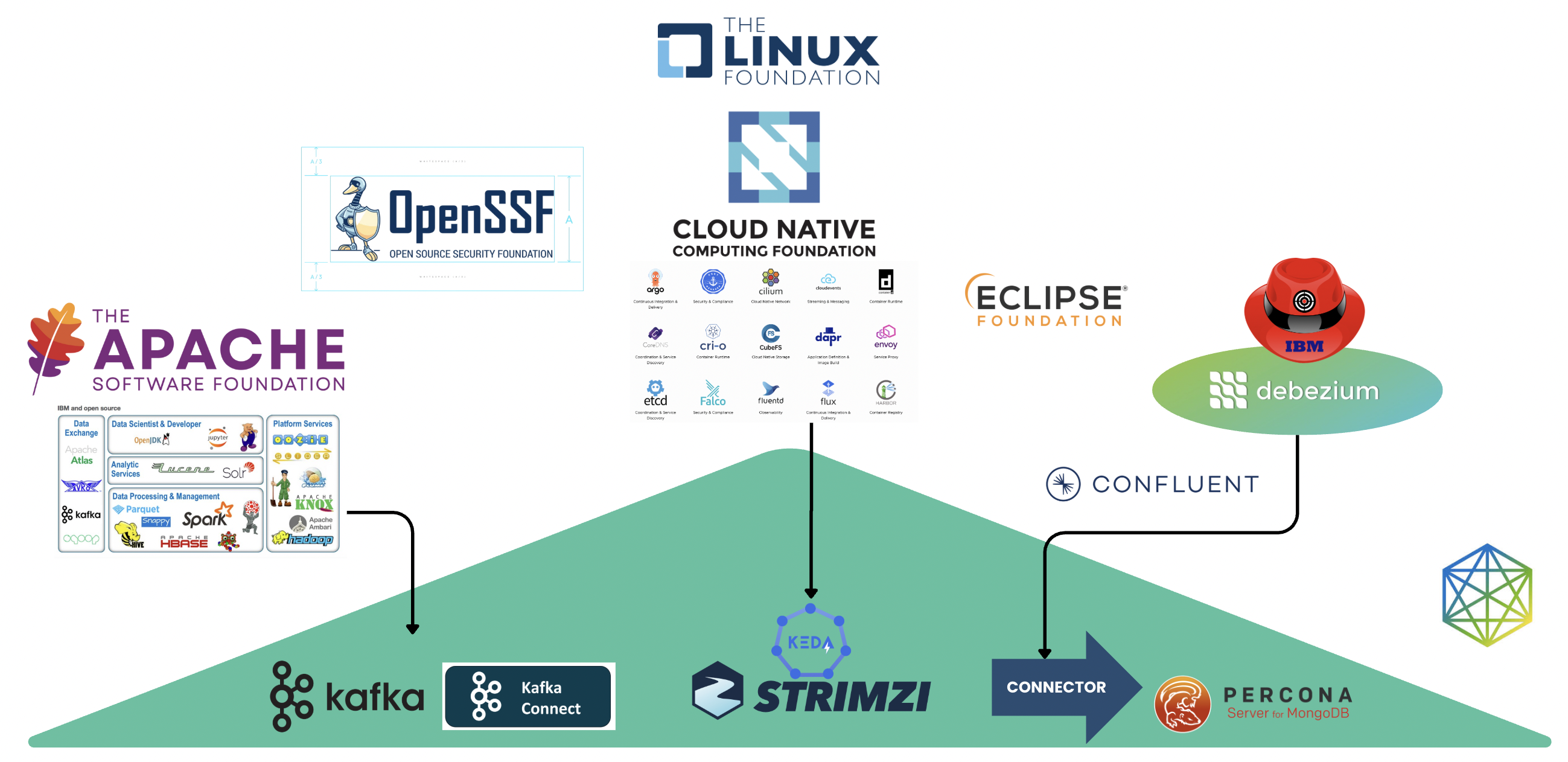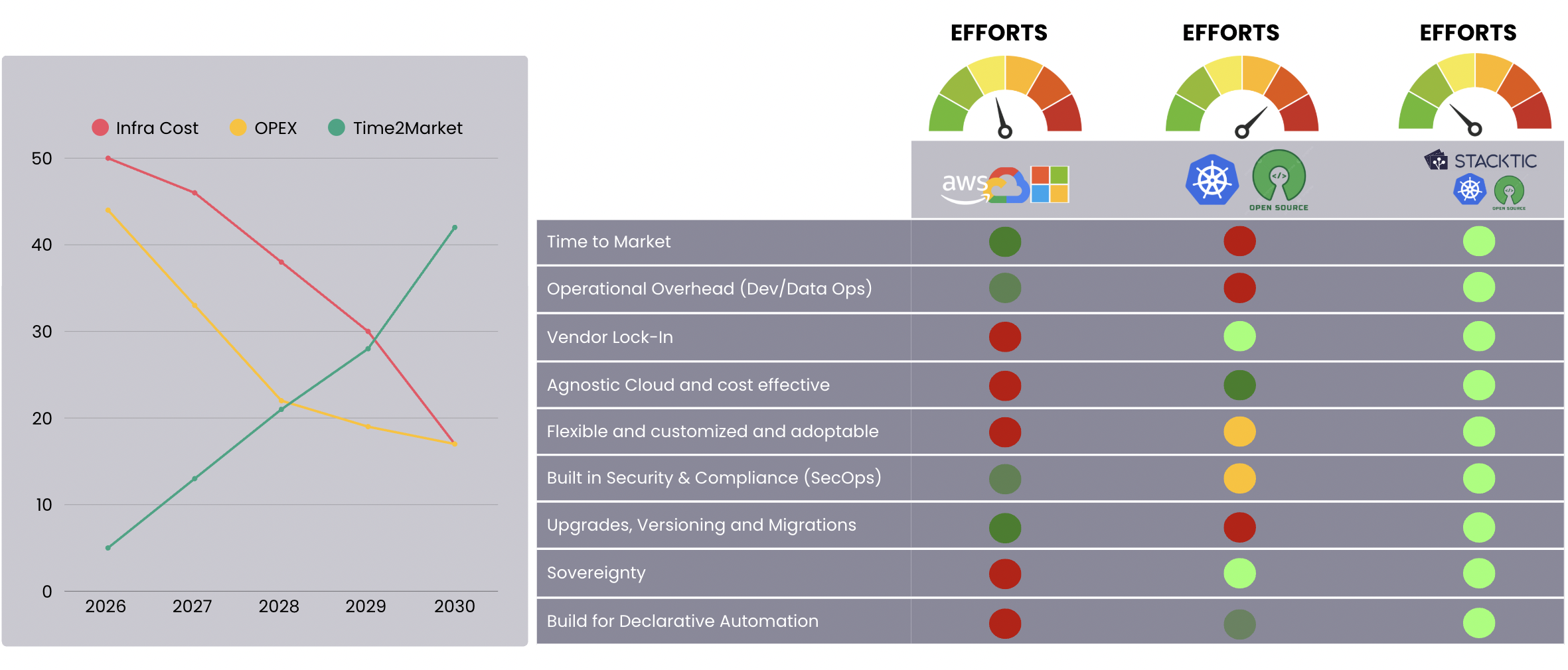Introduction to Stacktic
Quick Summary - Stacktic is a revolutionary logic framework that understands and automates relationships across your entire technology stack, transforming full-stack management from months of manual work into hours of automated deployment.
Note: This guide explains key concepts and provides examples of our framework, automation, and solutions. Detailed service configurations are generated directly within your application stack repository. For comprehensive feature documentation, refer to your generated stack documentation.
What Is Stacktic?
Stacktic is a new concept in full-stack management - a logic framework that understands and automates relationships across your entire technology stack.
The Problem
Current Reality
Companies are trapped between two bad options:
Option 1: Hyperscalers & Managed Services
| Issue | Impact |
|---|---|
| ❌ Skill Gap Dependency | Chosen due to lack of in-house expertise |
| ❌ False Insurance | Long-term commitment contracts with hidden costs |
| ❌ Vendor Lock-in | No portability or migration path |
| ❌ Premium Pricing | Pay extra for "promise" of faster time-to-market |
Option 2: Open-Source Kubernetes Solutions
| Issue | Impact |
|---|---|
| ❌ High Skill Requirements | Requires highly skilled teams or big budgets |
| ❌ Operational Burden | Massive complexity in daily operations |
| ❌ Complex Management | Versioning, observability, data pipelines |
| ❌ Security Overhead | Additional layers of complexity |
Hard Decisions Companies Face Daily
- AI Strategy: Private container-based LLaMA vs fast-moving AI services (OpenAI, Gemini, Claude)?
- Infrastructure: Stay with managed services or migrate to containers/Kubernetes?
- Modernization: How to transition from VMs or Cloud Foundry to modern Kubernetes?
Important: The impact of each choice extends beyond saving millions in infrastructure or operations costs—it's about meeting future demands for privacy, ensuring flexibility, and maintaining the ability to adapt and change.

The Root Cause: Relationships
It's all about relationships:
- Between services and databases
- Between microservices
- Between data pipelines and applications
- Between RBAC, metrics, and observability
- These are stack relationships

An Accompanying Problem
When you build a full-stack solution based on open source, you're essentially crossing multiple foundations and vendors, with no single compatibility control between them.
Example: Simple Kafka → MongoDB Sink
| Component | Source | Challenge |
|---|---|---|
| Kafka | Apache Foundation | Version compatibility |
| Operator | Strimzi (CNCF) | Integration complexity |
| Connector | Debezium | Configuration overhead |
| Data Sink | Percona MongoDB | Cross-vendor testing |
Each piece works well on its own, but together they create another layer of compatibility challenges.

The Stacktic Solution
Core: A Logic Framework
Stacktic is fundamentally a logic framework that:
- ✅ Integrates and understands relationships between all stack components
- ✅ Automates these relationships - from application topology to ETL to Day-2 operations

The UI Layer
On top of the logic framework, a modular platform engineering UI that enables:
- Integration of anything (inside or outside Kubernetes)
- Automation and connection of all components
- Real version control for every element of the stack using metadata
Revolutionary: Stack Version Control
Using metadata, Stacktic creates actual version control for your entire stack:
| Capability | Description |
|---|---|
| Migrate | Move to new services or versions out-of-the-box |
| Duplicate | Clone stack versions for production, staging, QA, testing |
| Rollback | Return entire stack to previous version |
| Track Changes | Redefine complexity as versioned, trackable changes |

The Value
Immediate Impact
| Metric | Improvement |
|---|---|
| Day-0 Planning | From months to hours |
| Deployment Costs | 70%+ reduction |
| Ops Overhead | Eliminated through automation (SRE, DataOps, SecOps) |
| Security | Automated, removing blockers |
| Engineer Focus | Shift from configuration to customization |
Strategic Benefits
| Benefit | Impact |
|---|---|
| Cloud-Agnostic Stacks | Single command deployment on any cloud |
| Infrastructure Savings | 30-50% cost reduction |
| Data Regulations | Full compliance support |
| Negotiation Power | No vendor lock-in |
| Sovereignty | Private ownership and sovereignty principles |
Vision
Stacktic bridges the gap between:
- Disadvantages of managed services (lock-in, cost, limited control)
- Disadvantages of pure open-source (time-to-market, operational overhead)
- Advantages of both approaches
Our Mission: By bypassing skill gaps and reducing operational complexity, Stacktic delivers fully stable, automated, cloud-agnostic, and sovereignty-compliant full stacks. A unified platform engineering solution that democratizes open source, boosts adoption, and removes vendor lock-in - providing full freedom to innovate, adapt, and keep pace with technology.

Next Steps
- Learn Core Concepts - Understand key terminology and architecture
- Quick Start Guide - Get started with your first stack
- Prerequisites - Check system requirements
Stacktic: Transforming stack complexity into versioned simplicity.